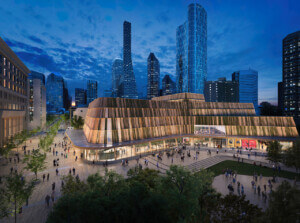La MaMa Experimental Theatre Club has reopened behind its original landmarked red brick facade, spiffing up its Renaissance Revival and Neo-Grec cast-iron decorative details. Inside, the brick walls are nearly all that remains of the original 1873 structure. Renovated and restored by Beyer Blinder Belle, led by architect Chris Cowan, working with theater and acoustic consultants Charcoalblue and theater consultant Jean Guy Lecat, the project transplants a new interior into the guts of La MaMa, resituating its raked, brick-lined theater club from the ground level to a newly inserted, expanded second level. Above, the club and new programming and amenity spaces in the lobby and third and fourth levels are hoisted on earthquake-safe and sound-isolating steel beams, brackets, and floor plates.
The $24 million renovation maintains a close spiritual connection to the intentions of La MaMa founder Ellen Stewart, the African American Saks Fifth Avenue porter-turned-fashion designer-turned-theater impresario, dearly departed in 2011, who rented a basement theater on East 9th Street in 1961 to create a venue for her brother, playwright Frederick Lights. Stewart stumbled onto the 4th Street building looking for expanded performance space in 1967, guided by her intuitive feeling about people and places—what she called her “beeps.”
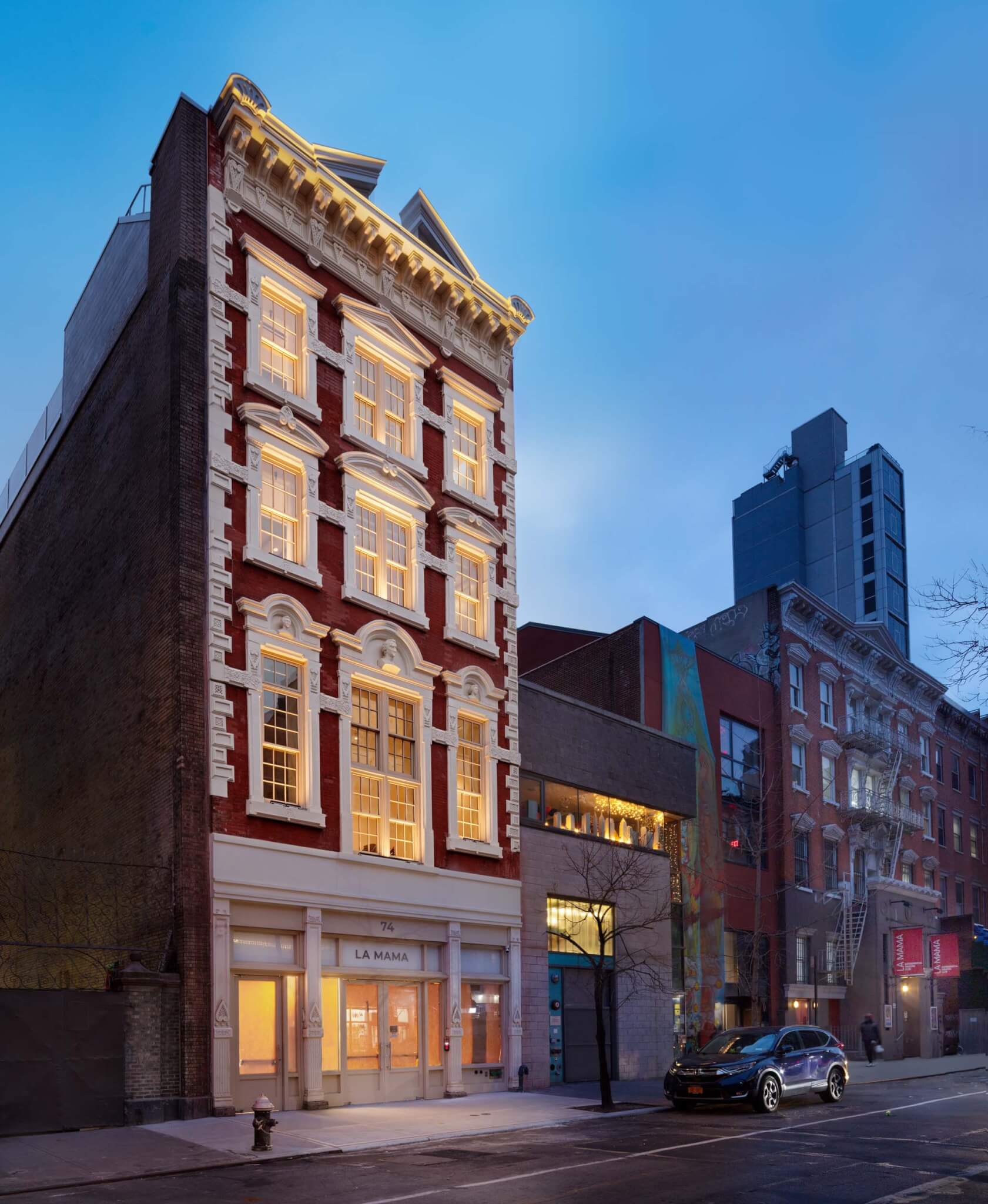
“That’s how she programmed shows,” Mary Fulham, managing director of La MaMa, told AN. “If she met you and she felt her beeps, she would give you a show. She was totally intuitive in that way. It was about the artist. Who are you? Do you need the space? What do you want to do? If it resonated with her, she called it her beeps.”
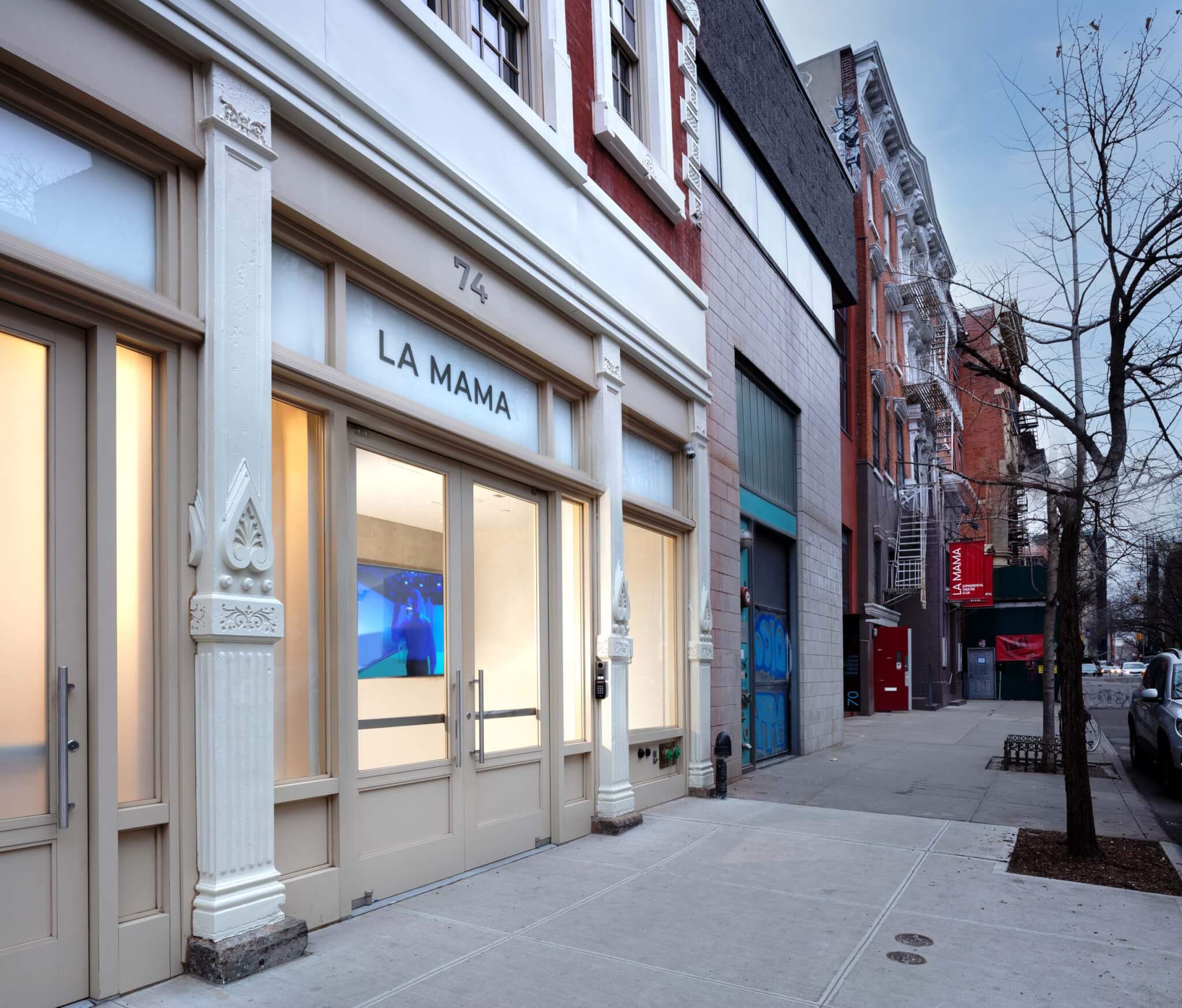
Originally built for the Aschenbrödel Club, a German professional music society, 74 East 4th Street stood out to Stewart among the blighted remnants of the block. The facade had been altered in 1892 by a German singing society and ornamented with upside-down hearts; busts of Beethoven, Mozart, and Mendelsohn; and ornate window surrounds, brackets, and cornice. But the building had been previously used in early 20th century as a meatpacking plant before falling into decline. This section of town up to 14th Street—Ukrainian Village, the East Village, and Alphabet City—had been condemned as an urban renewal area in the 1950s, only to be rescued from demolition by the Cooper Square Committee, a group of activists who fought valiantly to preserve the neighborhood.
Stewart roughly renovated the club with a $25,000 grant from the Ford Foundation and reopened it in 1969. La MaMa became a center of gravity on 4th Street, attracting temporary theaters which cropped up around it and propelling what became the city’s first naturally occurring cultural district, the Fourth Arts Block. The city honorifically named the stretch Ellen Stewart Way in 2011 on the 50th anniversary of La MaMa’s founding.
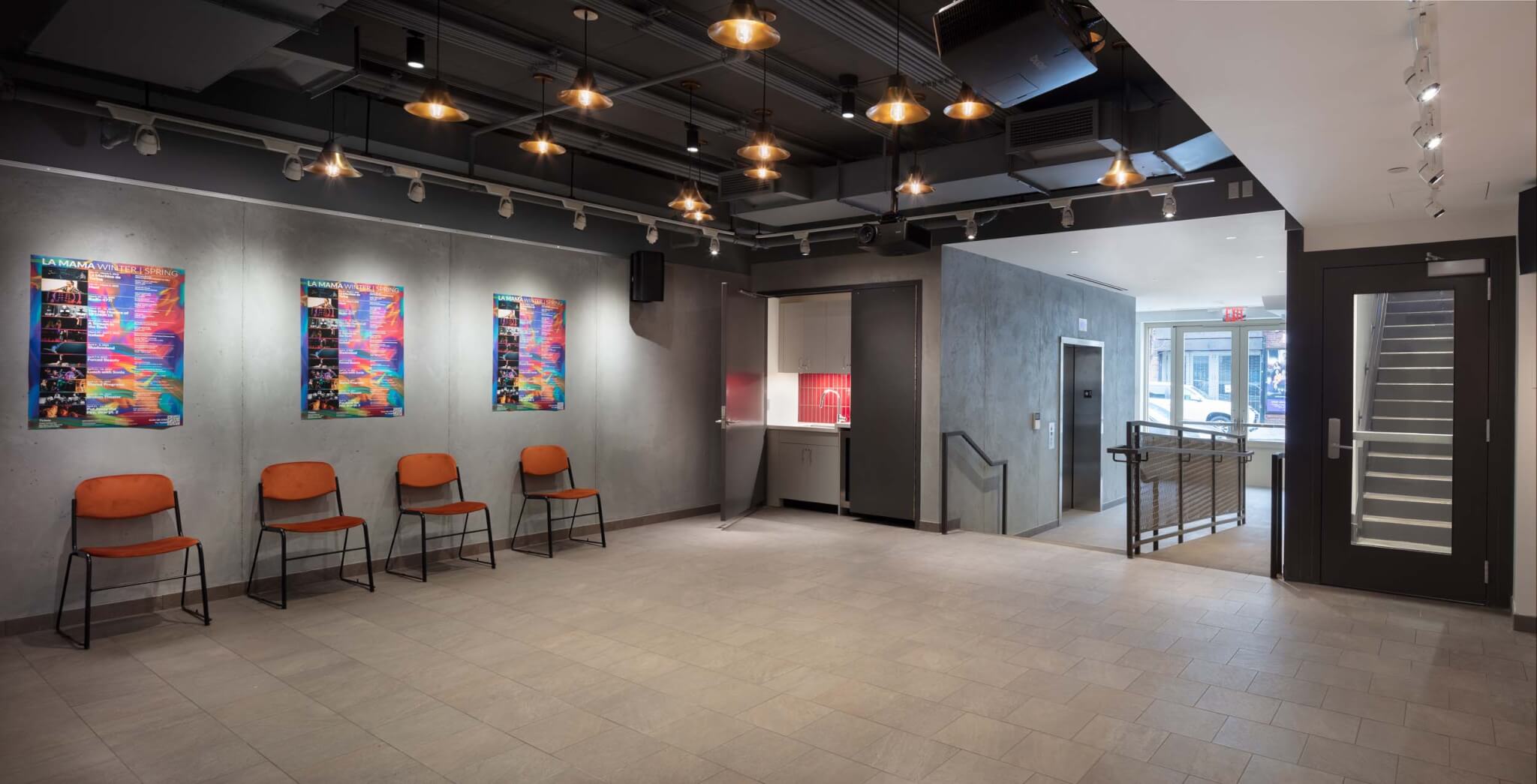
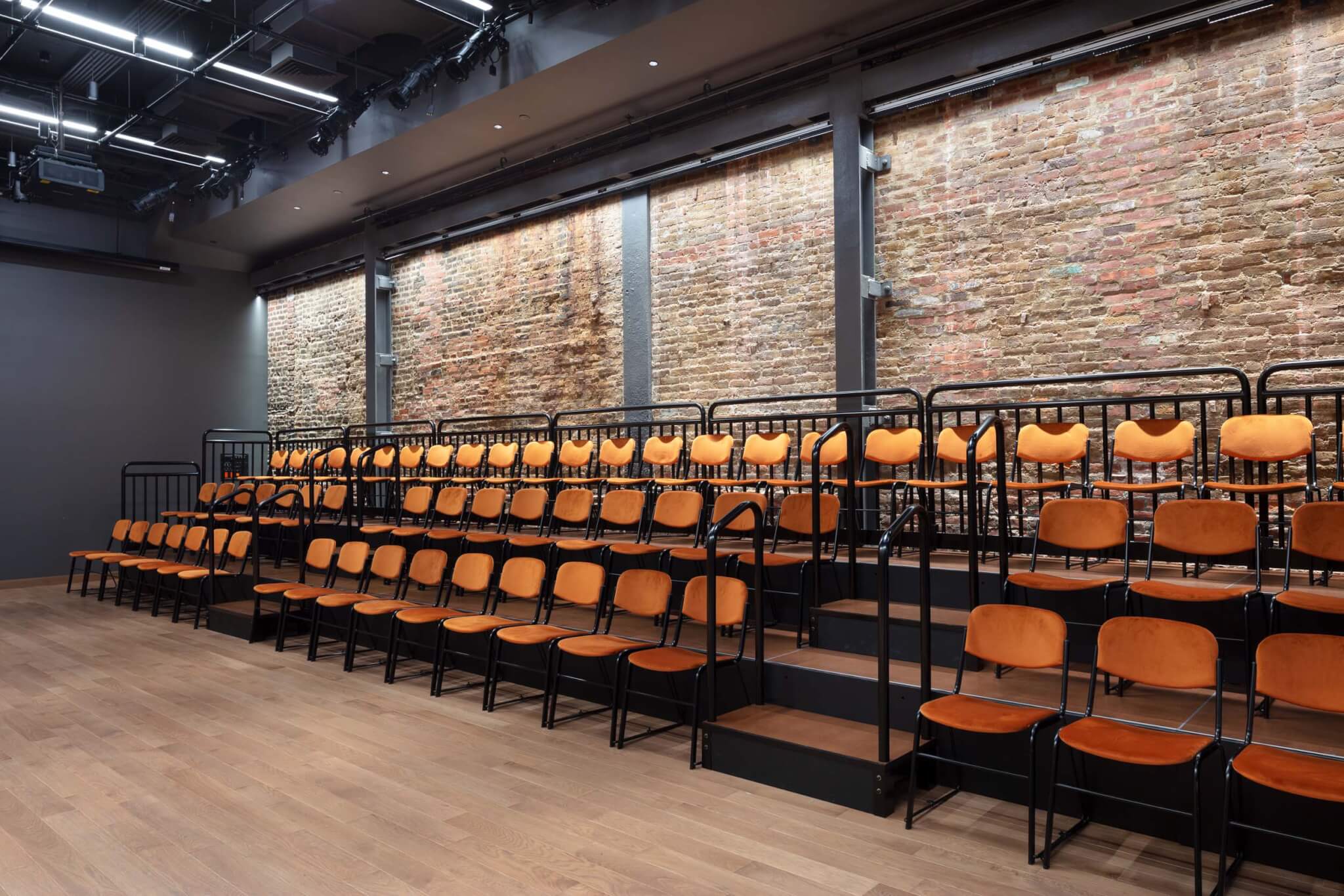
Cowan and colleagues honored Stewart’s original intentions through rough and ready materials, maintaining the unfinished brick walls in the club theater and using a flexible riser system for the stage and seating. The top floor has a tech room and a large bathroom with windows overlooking the sidewalk. Unvarnished materials like Homasote and Masonite screwed into the floor are designed for kids, artists, and productions to create, hang art, spill paint, and get dirty.
“The main approach we took was not to have an ego going into this job,” Cowan said. “We needed to understand what La MaMa envisioned for this building for the next 50 years or so. In the end, we wanted to give them a nice canvas to work on and in, because it’s really about the performers. That’s what critical and their artists that come in, to give them a space that’s multifunctional and that they can set up the way that they want to set it up.”
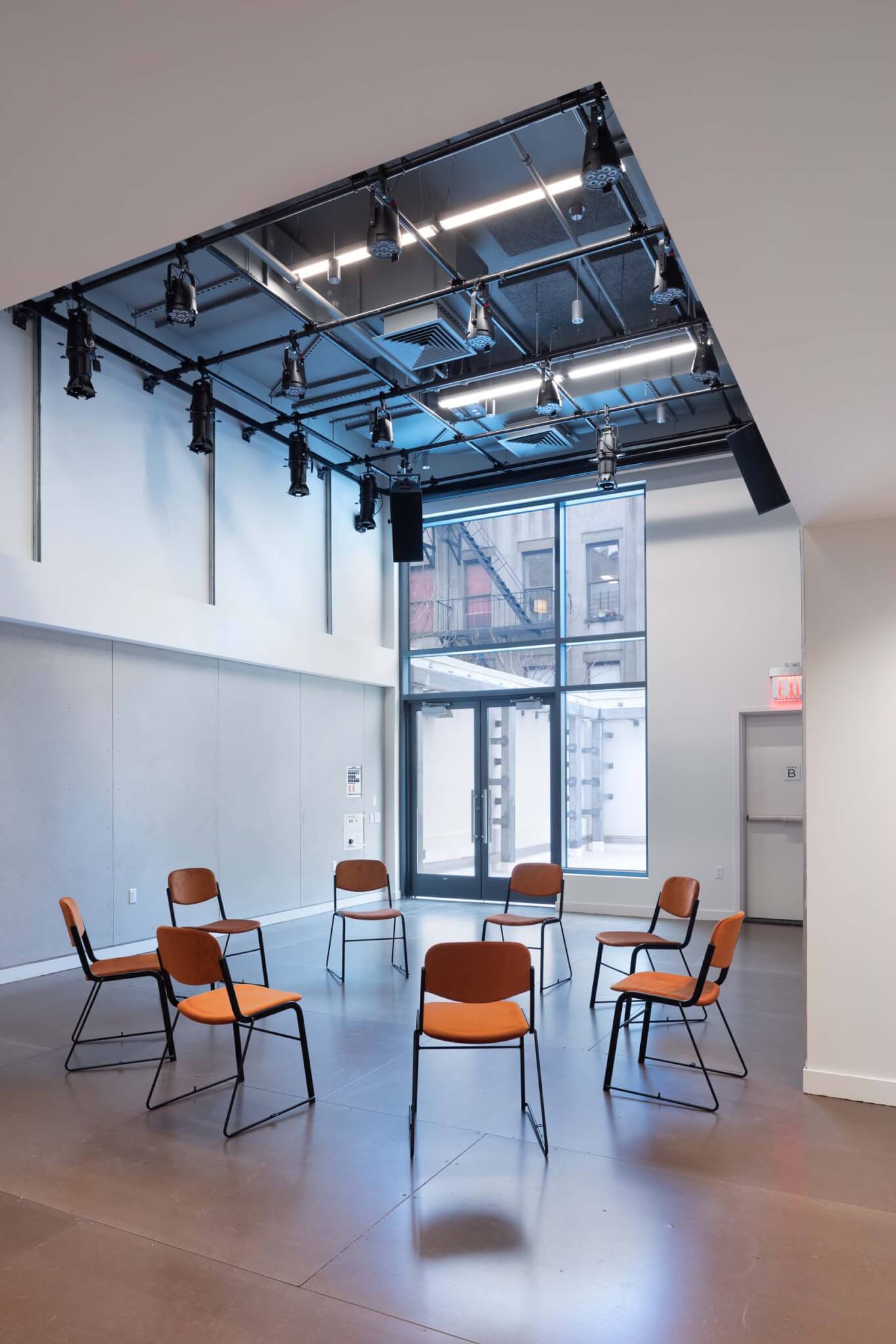
A proper lobby with street-window exposures, a digital installation, and a community art gallery are now accessible from the ground-level entrance, alongside a proper dressing room. A community art space occupies the third floor, once Stewart’s apartment, with access to a rooftop terrace.
“I think it’s a little more inviting,” said Fulham. “We want people to come in the space and broadcast out of the space. We’re really into this radical access that will make art a normal part of everybody’s life. It shouldn’t be an exclusive undertaking.”
Technical upgrades significantly improve the digital, lighting, sound, and projection capacities. During the pandemic, La MaMa increased production of work specifically designed for digital distribution, which the built-in systems enhance. Ultimately, the project expands the ability of guest artists to tell stories in any medium.
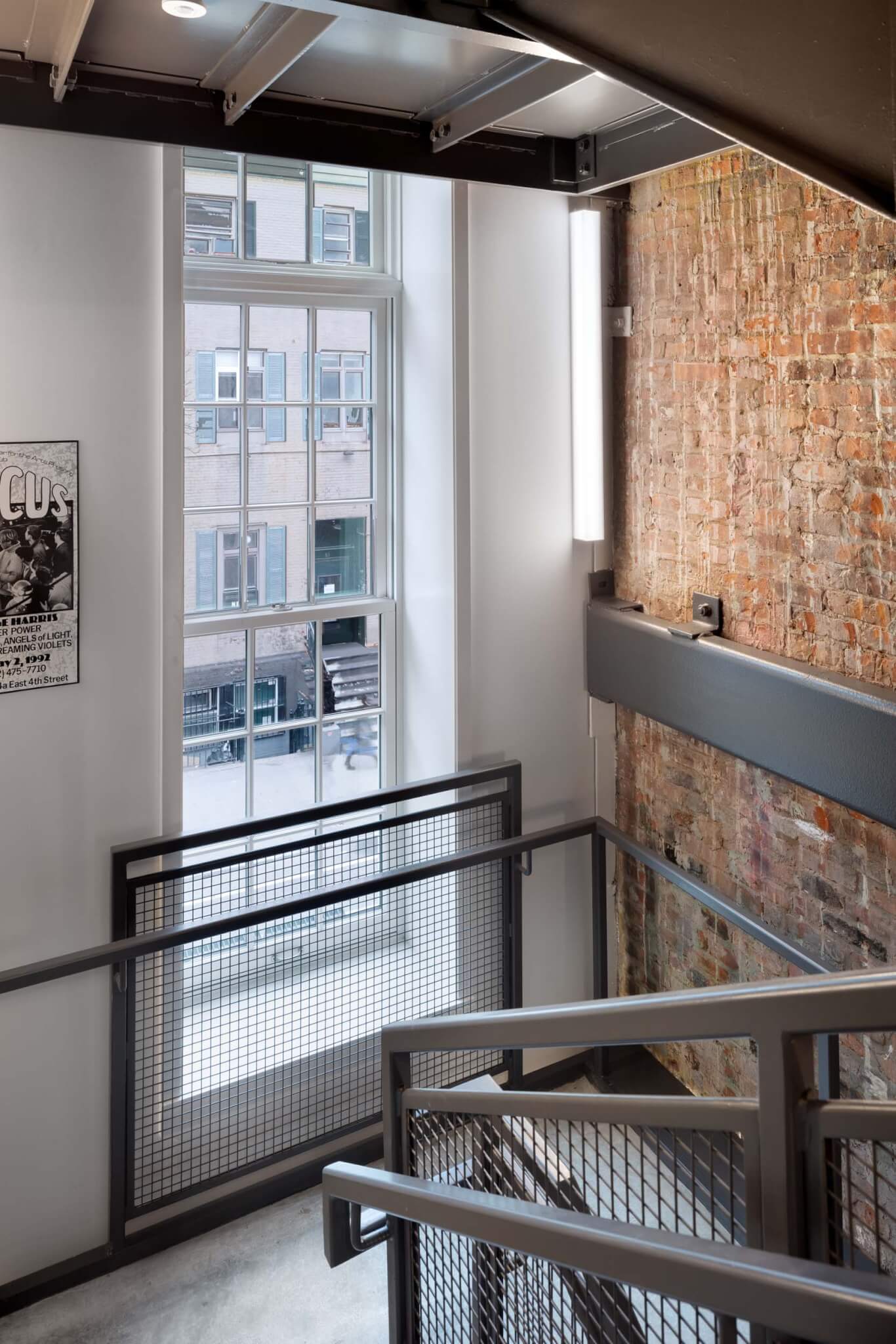
“It’s the stories that bind us,” Fulham said. “It’s the stories that make us understand our shared humanity. It’s not politics, god help us. We believe in the power of art.”
Stephen Zacks is a journalist and project organizer based in New York City.










